Your Complete Guide to Finger Limes (The ‘Citrus Caviar’ Fruit)
My first brush with what some chefs call ‘citrus caviar’ wasn’t at a fancy farmers market. It was years ago, deep in the chaos of a busy restaurant kitchen. Our head chef, a man of few words, quietly brought in a small, mysterious box from a specialty supplier. He called all the line cooks over, which almost never happened during prep. Inside were these weird, pickle-shaped fruits.
In this article
He sliced one open and gave it a squeeze. Out poured these tiny, glistening pearls that looked just like fish roe. That was the moment I tasted a finger lime for the first time. The pop of clean, intense acidity was a world away from any lime I’d ever known. It was a real lesson in how one single, strange ingredient can totally shift your perspective on flavor and texture.
Since that day, I’ve used them a ton. I’ve sorted through good batches and, let’s be honest, some pretty sad, mushy ones. This guide is all that hard-won experience rolled into one place. It’s about understanding the fruit, handling it right, and actually using it to make your food and drinks better.
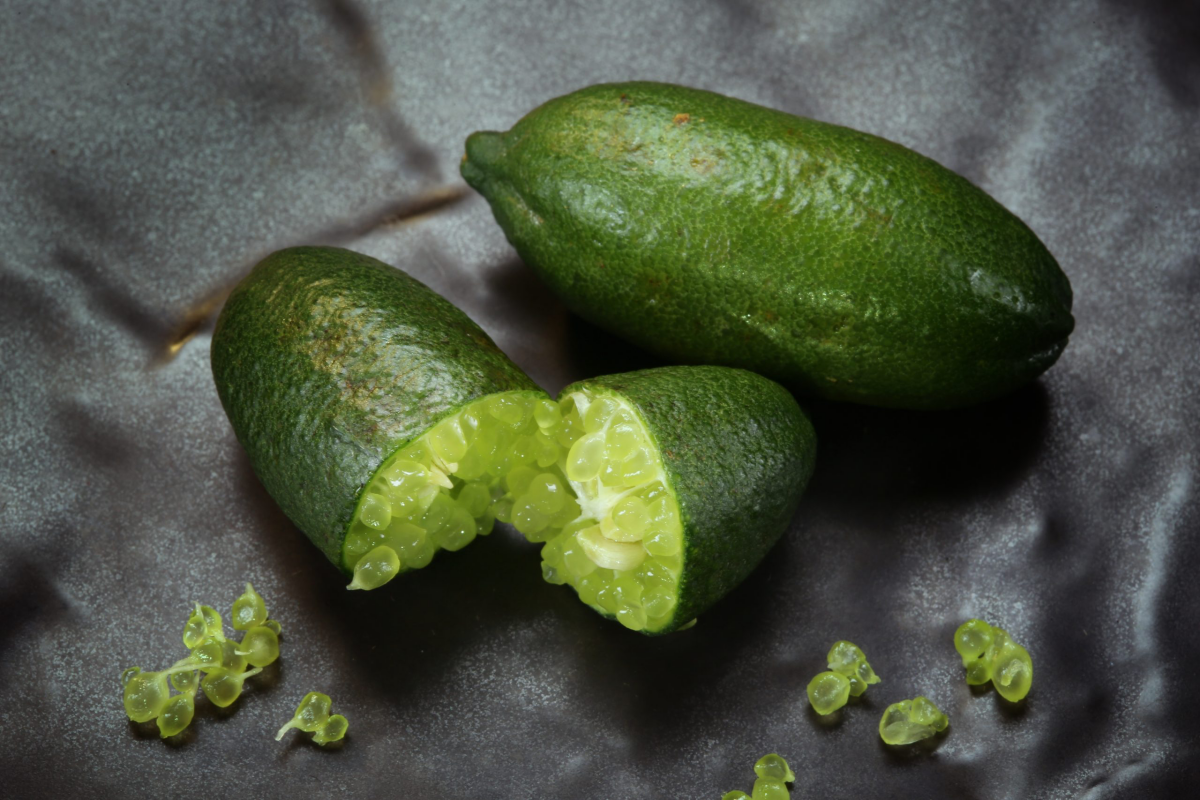
So What’s the Deal with the ‘Pop’?
To really get the most out of an ingredient, you have to know what makes it tick. A finger lime isn’t just a lime that looks like a gherkin; its whole internal structure is different. And that difference is everything.
These trees originally grew in the understory of subtropical rainforests down in Australia. That backstory is key because it tells you what they like: not a ton of direct sun, high humidity, and soil that drains well. They are notoriously slow-growing and, oh yeah, covered in some seriously sharp thorns, which means harvesting is a careful, hands-on job. All of that adds up to their higher price tag.
But the real magic is inside. Those little “caviar” pearls are technically juice vesicles. In a regular lemon or lime, all those little sacs are stuck together, forming the pulp. When you squeeze it, the sacs tear and juice flows out. In a finger lime, the vesicles are basically free agents. They grow as tiny, individual spheres, each holding its juice in a delicate membrane. When you slice and squeeze the fruit, you’re pushing out these perfect, whole pearls. The ‘pop’ you get is the sound of those tiny membranes bursting in your mouth. Pretty cool, right?
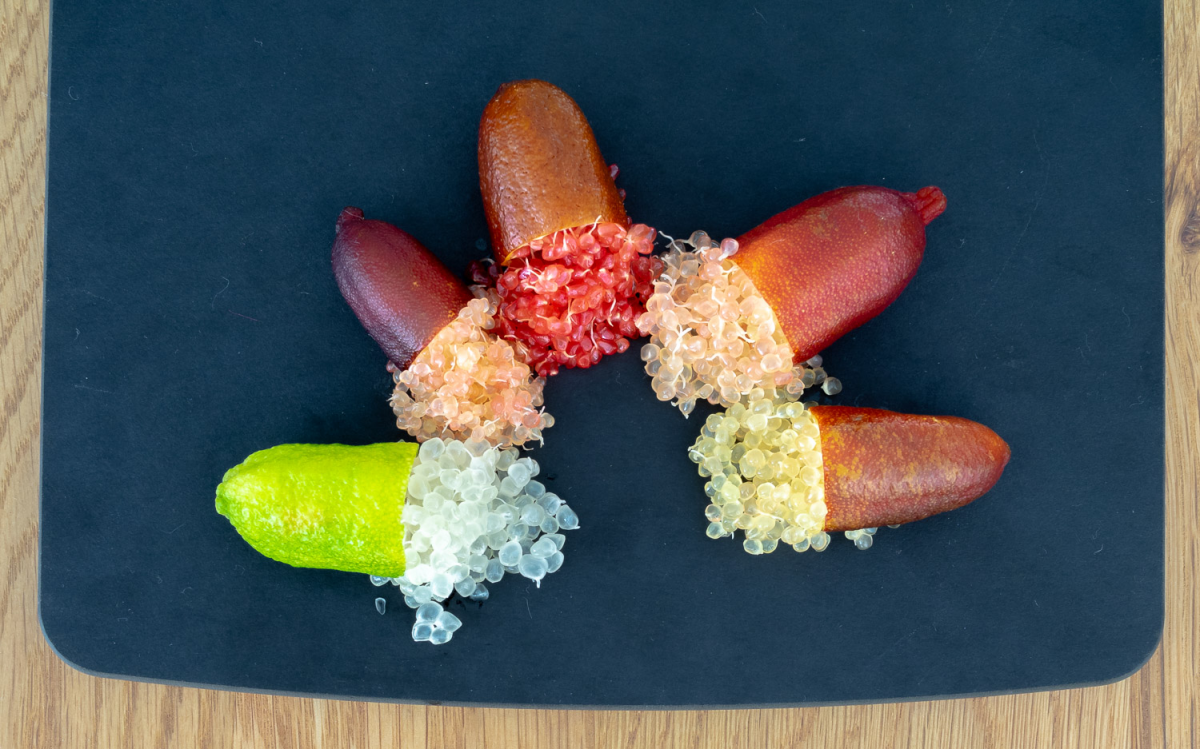
How to Buy and Store Them Like a Pro
Getting great results starts with buying great fruit. A bad finger lime is just an expensive, disappointing waste of money. Heads up: they’re not cheap. Be prepared to pay anywhere from $8 to $15 for a small 1-ounce clamshell at a place like Whole Foods or other specialty grocers. Yeah, I know!
When you’re standing there, here’s what to look for:
- Give it a Gentle Squeeze: It should feel firm all over, with just a tiny bit of give. If it’s soft, feels hollow, or is at all mushy, put it back. That means it’s old or was damaged by cold, and the pearls inside will be a watery mess instead of distinct spheres.
- Check the Skin: Look for smooth, slightly glossy skin. If it looks wrinkly or dehydrated, the pearls inside will be dry and won’t pop. A few minor surface scratches are okay, but any dark, soft spots are a sign of rot.
- Color is a Clue: The color tells you the variety, and it can range from green to yellow, red, or even a deep purple. Whatever the color, it should be vibrant and fairly uniform, not pale or washed out.

Keeping Them Fresh
Once you get your pricey little treasures home, don’t just toss them in the fridge drawer. They’ll dry out in a few days. Here’s the pro method: Lightly dampen a paper towel (not sopping wet!), wrap the finger limes in it, and place the bundle in a sealed, airtight container or a zip-top bag. Stored like that in your crisper drawer, they can stay fresh and poppy for a solid two to three weeks.
The Right Way to Get the Pearls Out
Most people will tell you to just slice it in half and squeeze from the middle. Please don’t do this! You’ll crush half the pearls and end up with a pulpy mess. For a clean extraction, use a sharp knife to slice off just the very top tip of the fruit. Then, hold it over a bowl and gently pinch from the bottom, sliding your fingers up. The pearls will slide out in a beautiful, neat stream with way less damage.
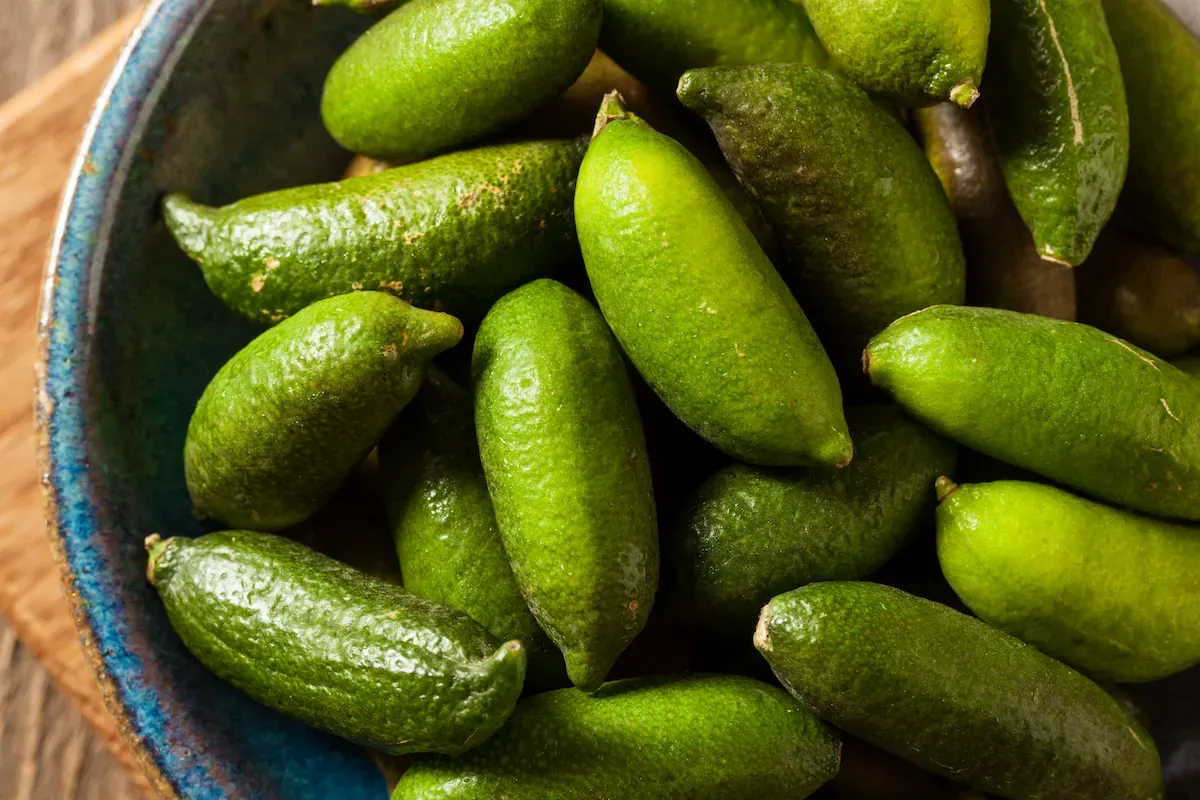
Let’s Talk Varieties (Without Getting Nerdy)
Saying you’re using a ‘finger lime’ is kind of like saying you’re using an ‘apple.’ There are different kinds, each with its own vibe. You might not always have a choice at the store, but it’s good to know what’s out there.
You’ve got your workhorse green-skinned varieties, which usually have clear or pale green pearls. These deliver that classic, sharp lime flavor and are fantastic all-rounders, especially for seafood. Then there are the ones with a pinkish-red hue; their pearls are a beautiful translucent pink. They’re often a touch less acidic, with more floral or grapefruit notes, making them amazing for cocktails and desserts. And if you get really lucky, you might stumble upon a variety with deep red or even purple skin and vibrant red pearls. These have a richer, almost berry-like acidity and make a show-stopping garnish.
Putting Finger Limes to Work in Your Kitchen
Okay, here’s the most important rule: heat is the enemy. It will destroy the delicate pearls and ruin the pop. Always think of finger limes as a raw, finishing ingredient added at the very end.
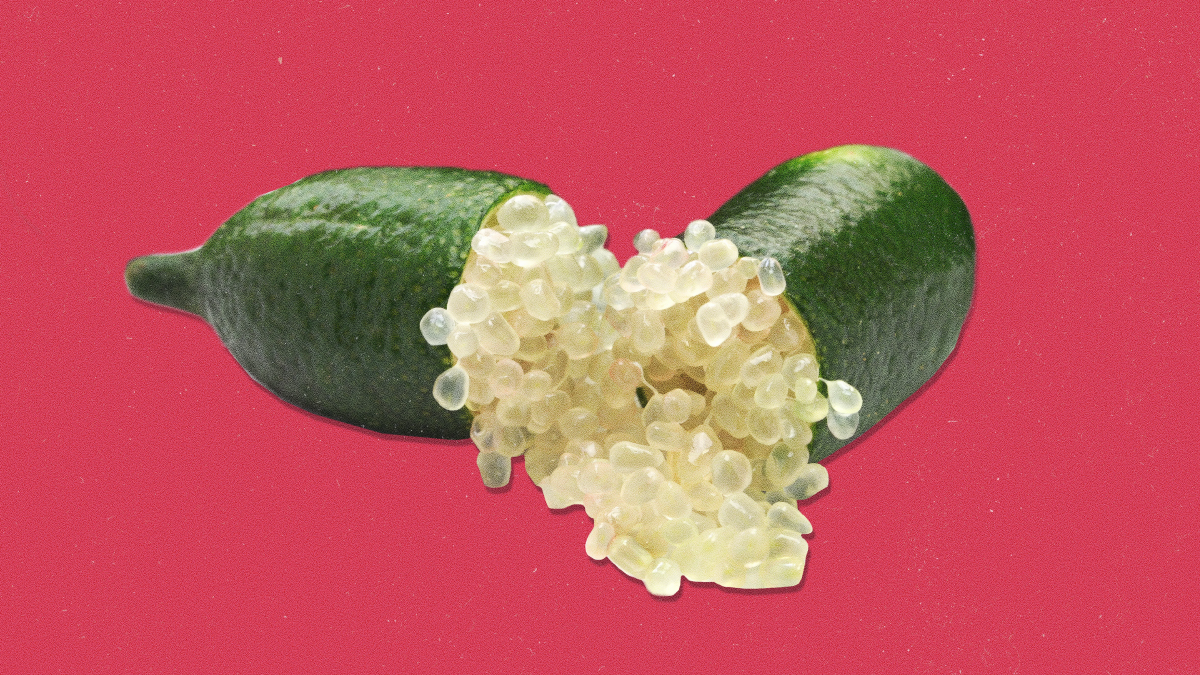
Simple, High-Impact Ideas:
- Seafood’s Best Friend: This is the classic pairing for a reason. Spoon the pearls over raw oysters, seared scallops, or grilled fish. The pop and zing are just incredible.
- Next-Level Salads: Don’t just toss them in. Make your vinaigrette, then gently fold the pearls into the finished dressing. They’ll suspend in the dressing and provide little flavor bombs as you eat.
- Dessert Garnish: The tartness is a perfect contrast to sweet things. Sprinkle them over cheesecake, panna cotta, or a simple bowl of vanilla ice cream. (Pro tip: You’ll probably want two or three whole finger limes to properly garnish a full-sized cheesecake).
- Fancy Cocktails: Add a small spoonful of pearls to a finished drink. They’re amazing in a Gin & Tonic or a glass of sparkling wine. The pearls dance with the bubbles. (Good to know: one medium finger lime should yield enough pearls for about four G&Ts).
Your First Mission: Feeling a little intimidated? Try this. Buy just ONE finger lime. Squeeze out the pearls and taste a few on their own. Then, sprinkle the rest over a scoop of good vanilla ice cream. I promise, you’ll have an “aha!” moment.
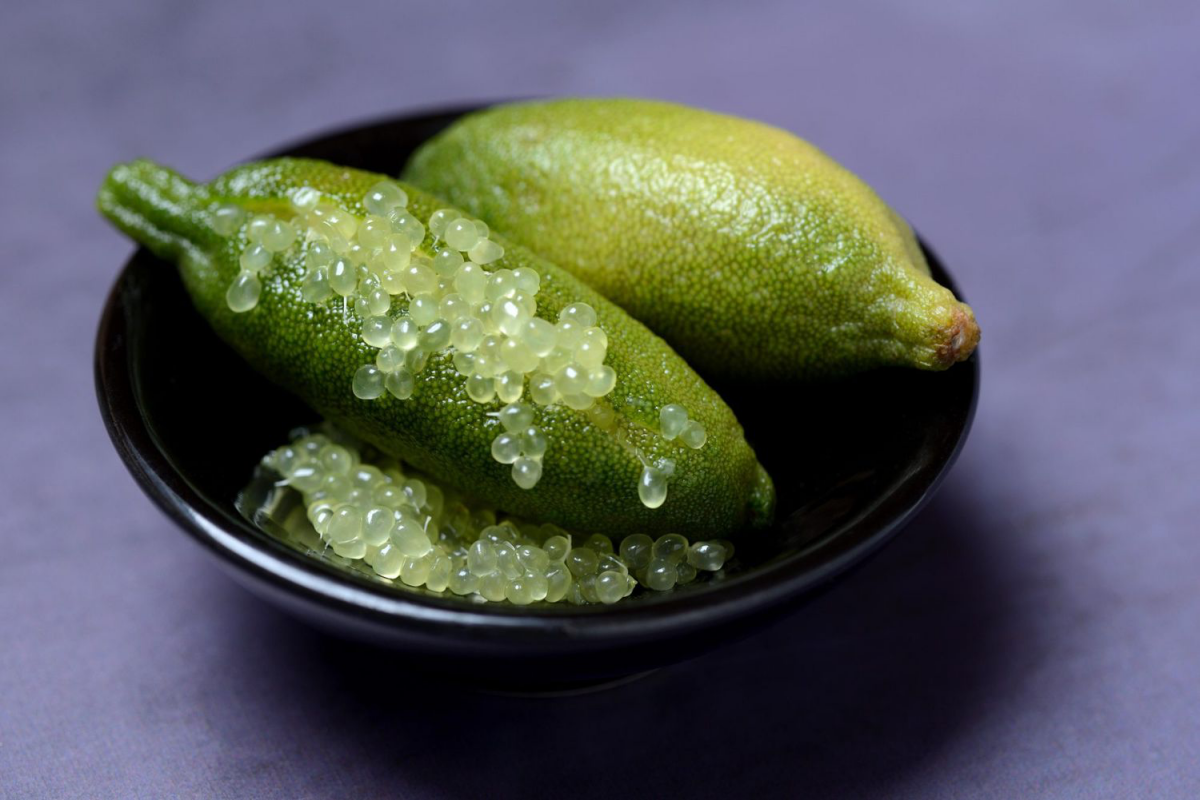
A Quick Note on Freezing
So, can you freeze them? Yes, you can, which is great news for such a seasonal and expensive ingredient. But there’s a catch: they will lose some of that signature ‘pop’ after thawing. Don’t freeze the fruit whole, or it will turn to mush. The best way is to extract the pearls, spread them in a single layer on a small parchment-lined tray, and freeze them solid. Then, transfer the frozen pearls to a small airtight container. They’ll last for months!
Zero-Waste Pro Tip: Use the Peel!
Don’t you dare throw away that peel! It’s packed with aromatic oils. You can dehydrate the peels in an oven set to its lowest temperature—around 170°F (or 75°C)—for 2 to 3 hours until they’re completely brittle. Then, blitz them into a fine powder in a spice grinder. This stuff is an incredibly potent seasoning. A tiny pinch is amazing in salt blends or for dusting the rim of a cocktail glass.
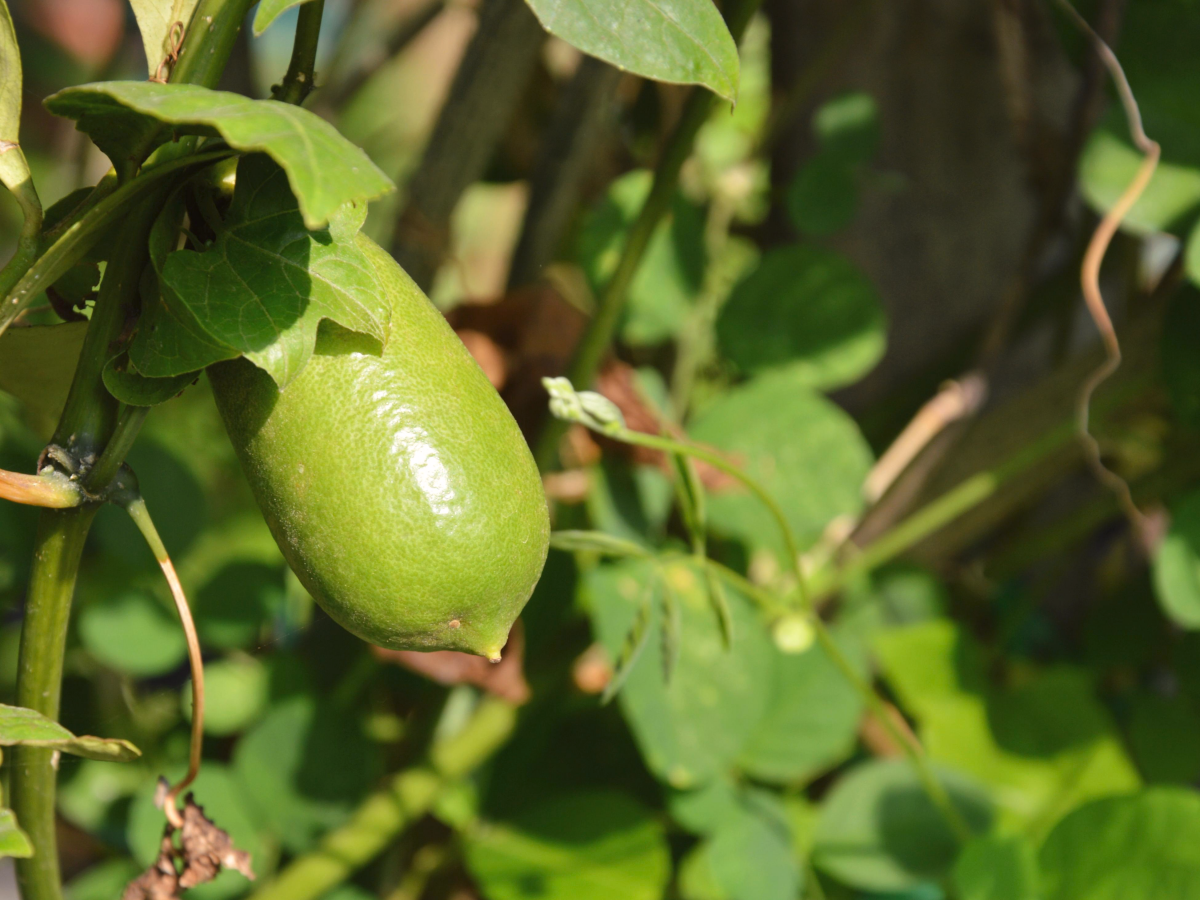
Feeling Ambitious? A Realistic Look at Growing Your Own
The idea of an endless supply of homegrown finger limes is tempting, but let’s be real: it’s a project. Unless you live in a very specific warm climate, growing in a container is your best bet.
You’ll want to start with a 5-gallon pot, something you can grab at any Home Depot or Lowe’s. This size helps prevent the soil from staying too wet and causing root rot. Use a fast-draining potting mix designed for citrus trees, not regular garden soil. The biggest mistake people make is overwatering. Let the top two inches of soil dry out completely before you water again.
And I’m not kidding about this next part: the thorns are legit. I’ve got the scars on my hands to prove it. When you’re pruning or harvesting, you absolutely must wear thick leather gloves and eye protection. This is not optional advice; it’s a real safety precaution.
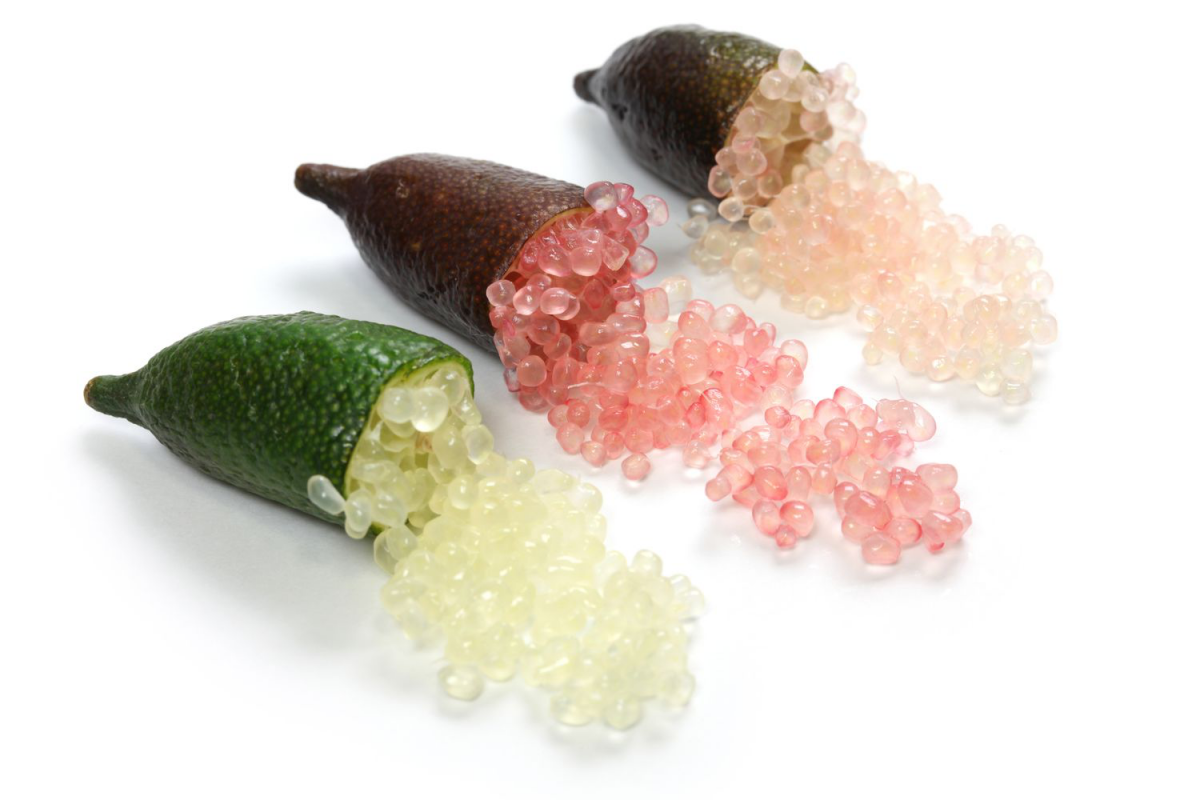
Final Thoughts
Let’s be direct. Finger limes are a luxury. Their price is a reflection of how slow they grow, the careful work it takes to harvest them, and how much chefs love them. Think of them like saffron or good truffle oil—a special finishing touch, not an everyday staple.
You don’t need them to make a great meal. But they offer a texture and a clean, bright burst of flavor that nothing else can quite replicate. They’re a fun reminder that nature comes up with things far more interesting than we ever could. Handle them with care, use them thoughtfully, and they’ll make your dishes sing.
Galerie d’inspiration
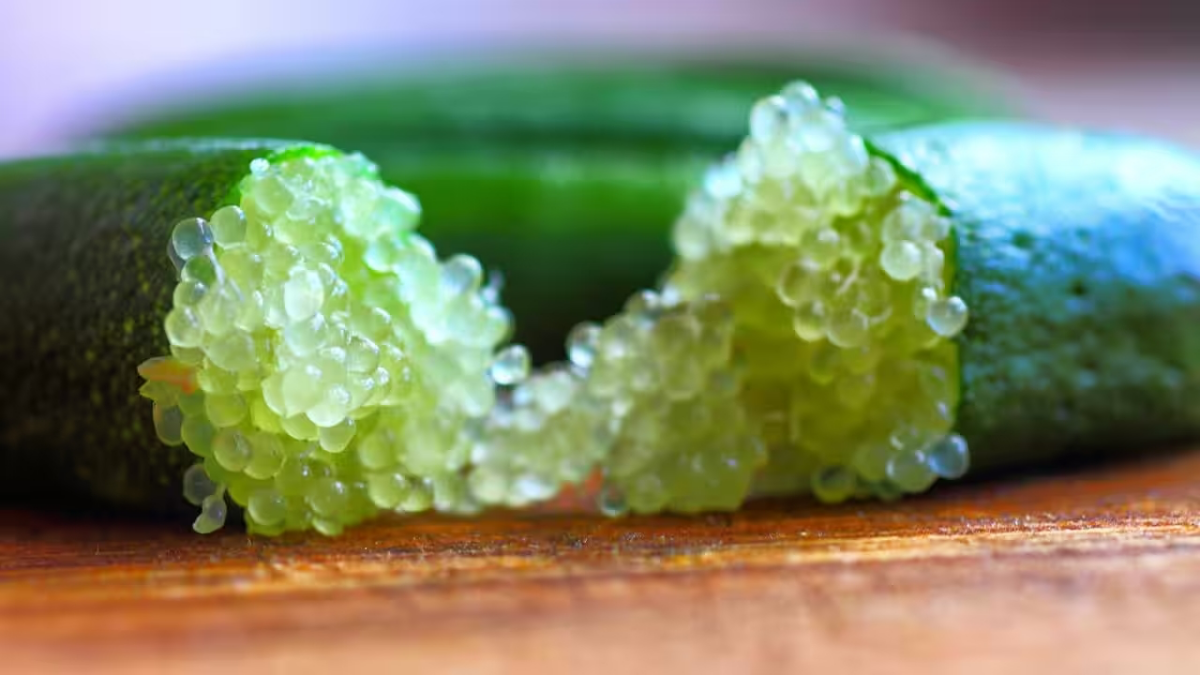
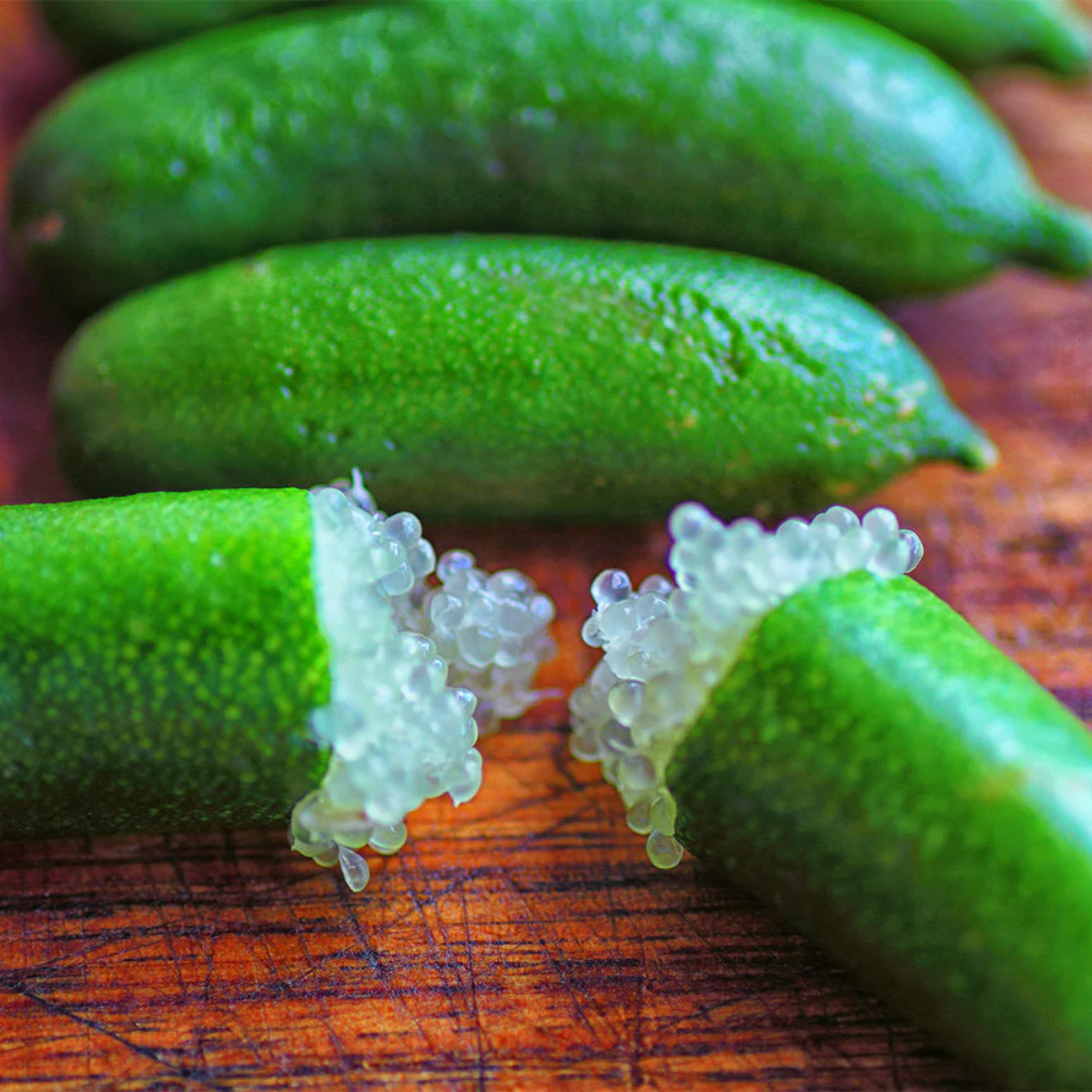
Beyond the obvious garnish on oysters, the versatility of finger lime is astonishing. Its zesty pearls provide a burst of texture and acidity that can elevate everyday dishes. Try them in:
- Avocado Toast: Scatter the pearls over your toast for a surprising, delightful pop with every bite.
- Grilled Fish: A perfect substitute for a lemon wedge on salmon or sea bass, adding visual flair.
- Cheesecake: A few pearls on a rich, creamy cheesecake cut through the sweetness and add a sophisticated finish.
- Salad Dressings: Whisk them into a simple vinaigrette just before serving to keep the vesicles intact.
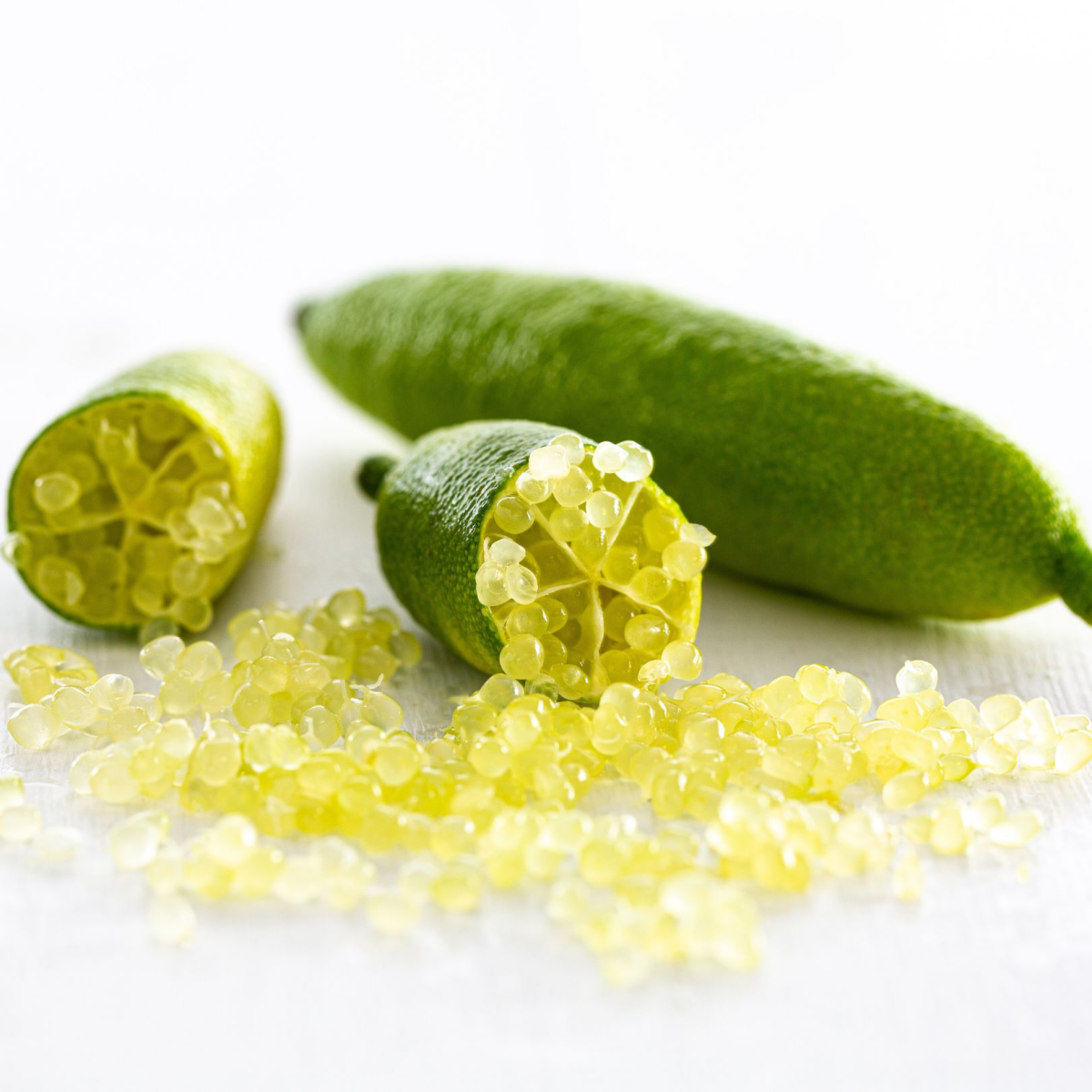
Emerald vs. Red Champagne: Not all finger limes are created equal. The ‘Emerald’ variety offers a classic, sharp lime flavor with a vibrant green color, ideal for seafood and cocktails. In contrast, the ‘Red Champagne’ variety has blush-pink to deep red pearls and a slightly sweeter, more grapefruit-like tang, making it a stunning addition to desserts and fruit salads. The choice depends entirely on the color and flavor profile you’re aiming for.
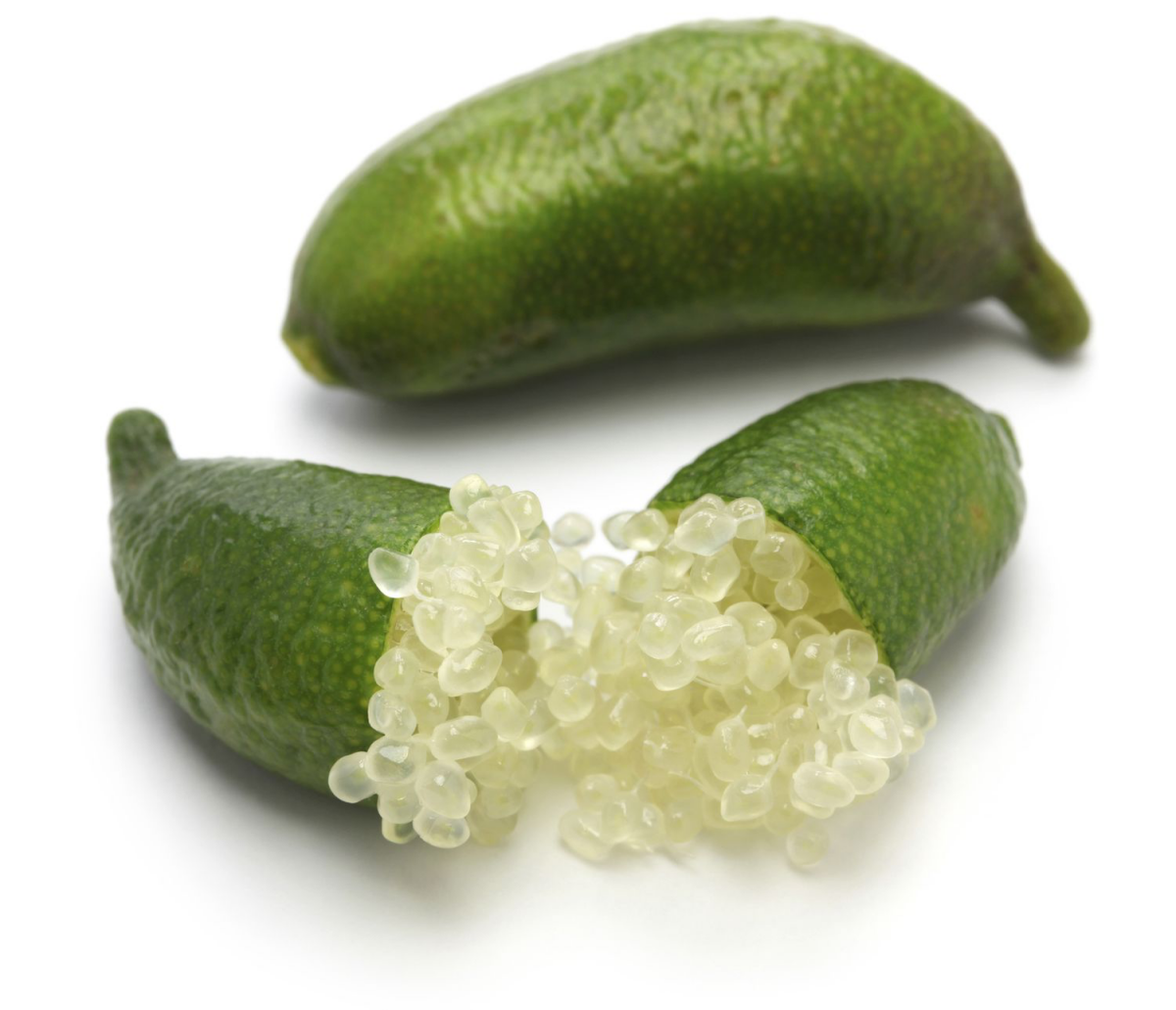
For over 65,000 years, various Indigenous Australian peoples have utilized the finger lime, not just for its unique flavor but also for its antiseptic properties and as a source of hydration in the bush.
This ancient history grounds the fruit far beyond its modern status as a luxury ingredient in haute cuisine. It’s a reminder that what seems novel to many chefs today has been a vital part of a culture’s foodways and medicine cabinet for millennia, a true testament to the native bounty of the Australian rainforest.
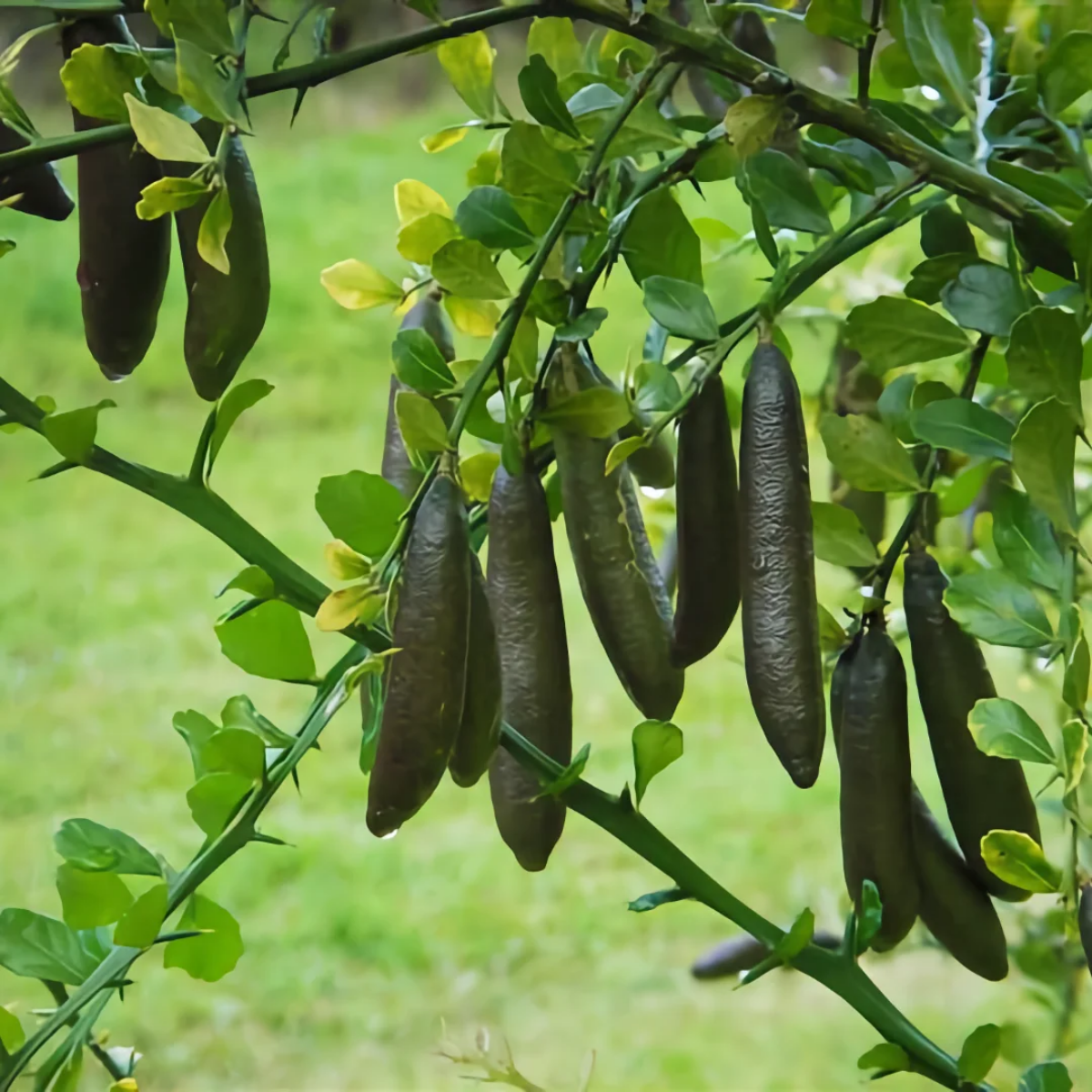
Want to instantly elevate a classic gin and tonic?
Forget the tired lime wedge. Spoon a small amount of finger lime caviar directly into your glass after pouring. The pearls will dance in the carbonation, suspended like tiny jewels. As you sip, you’ll get an occasional, explosive burst of pure lime essence that is far more aromatic and intense than a simple squeeze of juice. It pairs exceptionally well with botanical-forward gins like The Botanist or Hendrick’s, where it complements the complex herbal notes.
The critical storage rule: Treat them like fresh berries, not hardy citrus. To preserve that signature ‘pop’ and prevent them from turning mushy, store your finger limes in an airtight container in the refrigerator. They will keep perfectly for about two to three weeks, ready for your next culinary creation.










